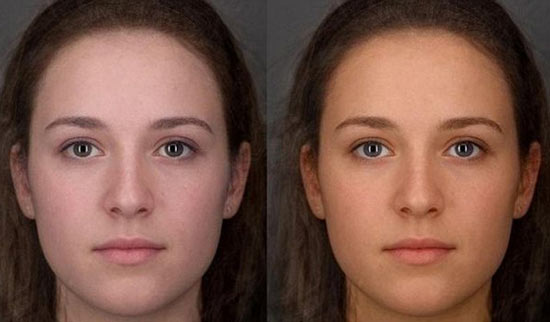导读:美国人常说一句话,“You are what you eat”,即饮食习惯忠实地反映了个人性格与生活环境。2012年3月7日发表在PLoS ONE期刊上的一篇研究论文显示,吃水果和蔬菜与皮肤发红和发黄确实存在着联系。

研究人员发现,增大水果蔬菜的摄入量,只需六周就能让你焕发出健康的光彩,看起来更有魅力
美国人常说一句话,“人如其食(You are what you eat)”,即饮食习惯忠实地反映了个人性格与生活环境。一项新研究或许可以证实这种说法的科学性。
根据2012年3月7日发表在PLoS ONE期刊上的一篇研究论文,吃水果和蔬菜与皮肤发红和发黄(skin redness and yellowness)有关联。
来自苏格兰圣安德鲁斯大学的Ross Whitehead和David Perrett领导的一个研究小组研究吃水果和蔬菜的数量是否影响皮肤颜色。他们监控35个人在六周内的水果和蔬菜摄入情况,然后发现皮肤发红和发黄程度随着这些研究参与者的水果和蔬菜食用量增加而增加。
他们还发现因为水果和蔬菜食用量增加而导致的皮肤颜色变化与吸引力增加相关联,这就提示着这种皮肤颜色变化反映着人们身体健康发生改善。
这项研究的参与者尽管存在少数非白色肤色的人种,但是主要还是白种人(Caucasian),因此科学家有必要开展进一步研究来理解饮食对其他肤色人群的潜在影响。

You Are What You Eat: Within-Subject Increases in Fruit and Vegetable Consumption Confer Beneficial Skin-Color Changes
Ross D. Whitehead, Daniel Re, Dengke Xiao, Gozde Ozakinci, David I. Perrett
Background: Fruit and vegetable consumption and ingestion of carotenoids have been found to be associated with human skin-color (yellowness) in a recent cross-sectional study. This carotenoid-based coloration contributes beneficially to the appearance of health in humans and is held to be a sexually selected cue of condition in other species.
Methodology and Principal Findings: Here we investigate the effects of fruit and vegetable consumption on skin-color longitudinally to determine the magnitude and duration of diet change required to change skin-color perceptibly. Diet and skin-color were recorded at baseline and after three and six weeks, in a group of 35 individuals who were without makeup, self-tanning agents and/or recent intensive UV exposure. Six-week changes in fruit and vegetable consumption were significantly correlated with changes in skin redness and yellowness over this period, and diet-linked skin reflectance changes were significantly associated with the spectral absorption of carotenoids and not melanin. We also used psychophysical methods to investigate the minimum color change required to confer perceptibly healthier and more attractive skin-coloration. Modest dietary changes are required to enhance apparent health (2.91 portions per day) and attractiveness (3.30 portions).
Conclusions: Increased fruit and vegetable consumption confers measurable and perceptibly beneficial effects on Caucasian skin appearance within six weeks. This effect could potentially be used as a motivational tool in dietary intervention.
文献链接:https://www.plosone.org/article/info:doi/10.1371/journal.pone.0032988








